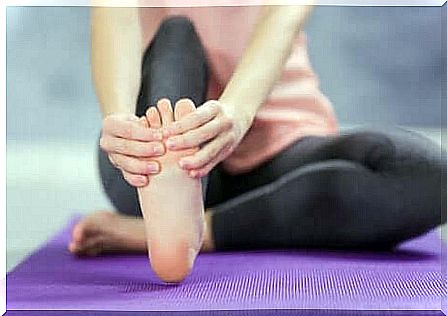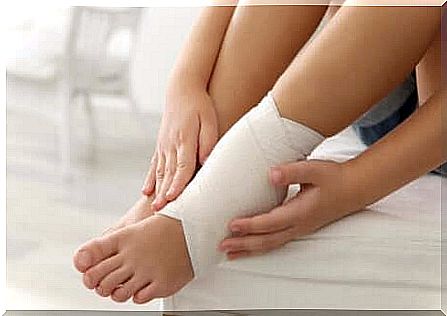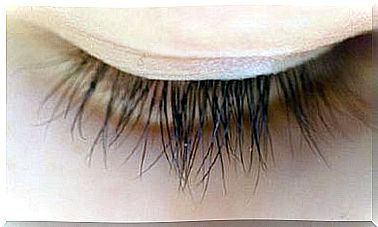What To Do With Swollen Ankles? 5 Tips
There are various causes that trigger swollen ankles. Some of them require medical treatment, but often appropriate measures and home remedies can already provide relief. Find out more about this topic today.

Today we have several tips for you to try out for swollen ankles . Don’t forget, however, that treatment will vary depending on the cause of the problem.
For example, if there is a ligament injury or immobility, you should definitely see a doctor. However, if it is just a minor injury or insignificant fluid retention, today’s recommendations can be very beneficial.
The elderly and pregnant women in particular often suffer from swollen ankles. But athletes or people who do strenuous physical jobs can also suffer from swelling in this area. It should be noted that there is often a connection to circulatory disorders, trauma and infections. Most of the time, the problems are minor and simple measures can be used to successfully address them. Take care!
5 recommendations to help with swollen ankles
Before you start taking any action, you should determine the cause and severity of the symptoms. If the swelling is temporary, such as caused by sitting or standing for long periods of time, or if it is a slight build-up of fluid, certain exercises and home remedies may be sufficient to relieve the symptoms.
However, if the symptoms persist for a long time and are accompanied by pain, bruising, or even difficulty walking, you should definitely see a doctor who can determine the right treatment. The doctor carries out various examinations for the diagnosis and usually also creates an x-ray of the ankle.
The following recommendations can help with swollen ankles:
1. Elevate your legs if your ankles are swollen

The simple but effective thing to do is to put your legs up. This promotes blood flow in the direction of the heart, which reduces swelling. You will find relief quickly and relieve uncomfortable pain or numbness.
What should I do?
- Lie in bed or on a yoga mat and support your legs vertically against a wall.
- Remain in this position for 10 to 15 minutes and then rest.
2. Moderately intense exercise
Moderate exercise has therapeutic effects on minor injuries that can lead to swollen ankles. It’s one of the best habits for getting your blood flowing and preventing fluid retention. The World Health Organization (WHO) recommends doing 150 minutes of moderate exercise per week.
What should I do?
- If you have an injured ankle, you will need to see a doctor or physical therapist for proper treatment. An expert can show you exercises that you can do at home.
- Avoid vigorous exercise until you are no longer discomfort.
- Prefer moderate exercise such as walking, swimming, or stretching with an elastic band.
3. Treat yourself to rest if your ankles are swollen

Specific exercises of moderate intensity are very helpful, but a few days of rest are also important! This allows you to reduce the pressure of your own body weight on your ankles. In addition, the muscles relax and the affected tissue is recovered.
What should I do?
- If you’ve injured your ankle, give yourself 2 to 3 days of rest.
- If you suffer from pain when propping up your foot, use a walking aid (crutches).
4. Apply ice packs to swollen ankles
Using ice is simple and very effective. You can use it to reduce swelling, because ice has a quick therapeutic effect. You can also massage the ankle area to relieve pain, prevent muscle spasms, and help the bruises heal.
What should I do?
- Put a few ice cubes in a bag or wrap them in a cloth.
- Then gently massage the ankle area and apply the ice.
- Let it work for a few minutes and repeat the treatment every 2 to 4 hours.
- Do this technique for 3 to 4 days to control the swelling.
5. Use a bandage on swollen ankles

It can be very helpful to use a bandage to protect the affected ankle to reduce swelling and bruising. It’s best to use the bandage for 2 days or a little longer, depending on how severe the swelling is.
What should I do?
- Cut a horseshoe-shaped pillow from a piece of felt and place it on the outer ankle area.
- Then you connect the area with a bandage. This should not be too tight!
- When in doubt, seek help from a doctor.
- The bandage should not interfere with blood circulation, otherwise the problem can worsen!
Don’t forget that proper diet is also important if you have swelling. Avoid using too much salt, as this leads to fluid retention. You should also drink plenty of water and avoid unhealthy habits (such as alcohol and tobacco).








